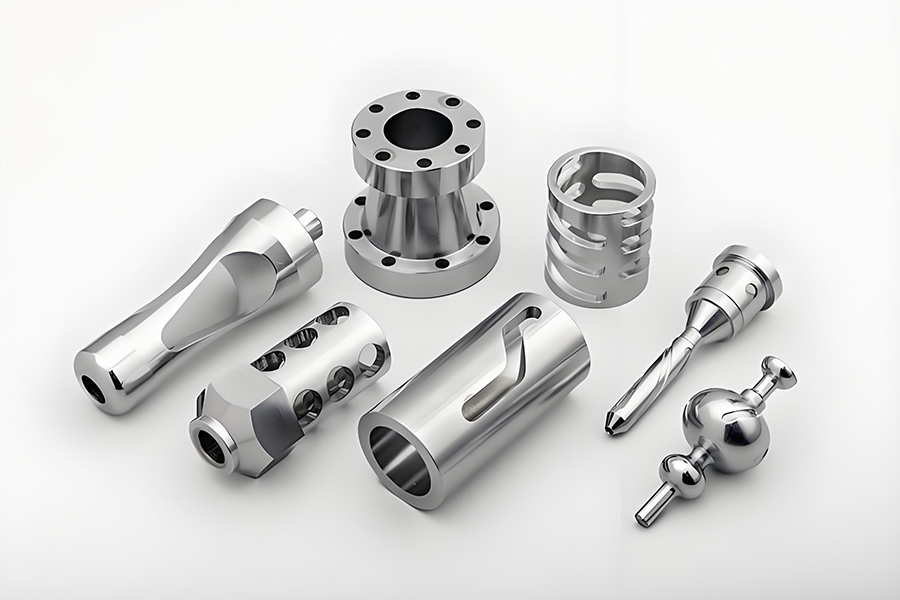Fair Shine industrial (Hong Kong) Co., Limited
To provide customers with the most comprehensive precision mold parts solutions.

2025-10-16 16:34:40
This question addresses the core of CNC Turning production. Understanding the process enables a clear grasp of the full workflow for parts—from design to finished product. The machining process for CNC turned parts is primarily divided into three stages: Preparatory Stage, Core Machining Stage, and Post-Processing Stage—each with distinct operational steps and objectives.

The core of this stage lies in defining machining requirements, developing plans, and preparing all materials and programs—factors that directly determine the accuracy of subsequent machining operations.
Drawing & Process Analysis: Interpret part design drawings to clarify critical specifications, including dimensional tolerances, surface roughness, and material type. Simultaneously, map out the machining sequence (e.g., determining whether to machine the outer diameter first or the inner bore first).
Material Preparation: Select materials (e.g., aluminum alloy, stainless steel) in line with drawing requirements, then cut raw materials to lengths suitable for lathe machining (typically slightly longer than the finished part to reserve stock allowance).
Programming & Import: Create part models using CAD software, then generate CNC Machining programs (containing tool paths, spindle speed, feed rate, and other parameters) via CAM software. Finally, import the program into the CNC lathe’s control system.
Equipment & Tool Preparation: Inspect the operational status of the CNC lathe. Install appropriate tools (e.g., external turning tools, internal turning tools, threading tools) based on machining needs, and perform tool setting to ensure precise alignment between tool coordinates and the machine’s coordinate system.
This is the critical phase where raw materials are transformed into the target shape—fully automated by the CNC system, which removes excess material step-by-step per the preset program.
Workpiece Clamping: Secure the prepared raw material in the lathe chuck, ensuring firm clamping and compliant concentricity to prevent workpiece loosening or displacement during machining.
Test Cut & Parameter Debugging: Initiate the machine for a small-scale test cut. Measure the dimensions of the test-cut part to verify compliance with requirements. If deviations occur, adjust tool compensation parameters, machining speed, or feed rate until the test cut meets accuracy standards.
Automated Machining: Once the test cut is qualified, the lathe enters full automated machining mode. It sequentially executes processes such as external turning, internal bore turning, face turning, threading, and grooving per the program—until the part reaches its basic formed state.
In-Process Inspection: During machining, use the lathe’s built-in inspection functions or manual sampling to check part dimensions and surface quality in real time. Promptly identify and resolve anomalies (e.g., reduced accuracy due to tool wear).
Formed parts require post-processing to meet end-use requirements, primarily involving quality inspection and surface optimization.
Part Dismantling & Preliminary Cleaning: After machining, remove the part from the chuck and clean surface debris (e.g., chips, oil stains).
Precision Inspection: Use tools such as calipers, micrometers, and coordinate measuring machines (CMMs) to conduct comprehensive inspections of dimensional tolerances, geometric tolerances (e.g., roundness, coaxiality), and surface roughness—screening for qualified products.
Surface Treatment: Perform surface optimization on qualified parts. Common processes include electroplating (e.g., zinc plating, chrome plating), anodization (predominantly for aluminum alloys), heat treatment (e.g., quenching to enhance hardness), and painting. These processes improve the part’s corrosion resistance, wear resistance, or aesthetic appearance.
Packaging & Warehousing: Categorize and package parts that have completed surface treatment to prevent damage during transportation or storage. Finally, store the parts in a warehouse awaiting shipment.

Fair Shine industrial (Hong Kong) Co., Limited
To provide customers with the most comprehensive precision mold parts solutions.
+86 189 2682 6341
Block 1, No. 12, Wusong 4th Street, Yuwu Industrial Zone, Dongcheng District, Dongguan, Guangdong, China
Copyright © 2025 Dongguan Huixiang Mold Technology Co., Ltd all rights reservrd.
Technical support: HuaShang